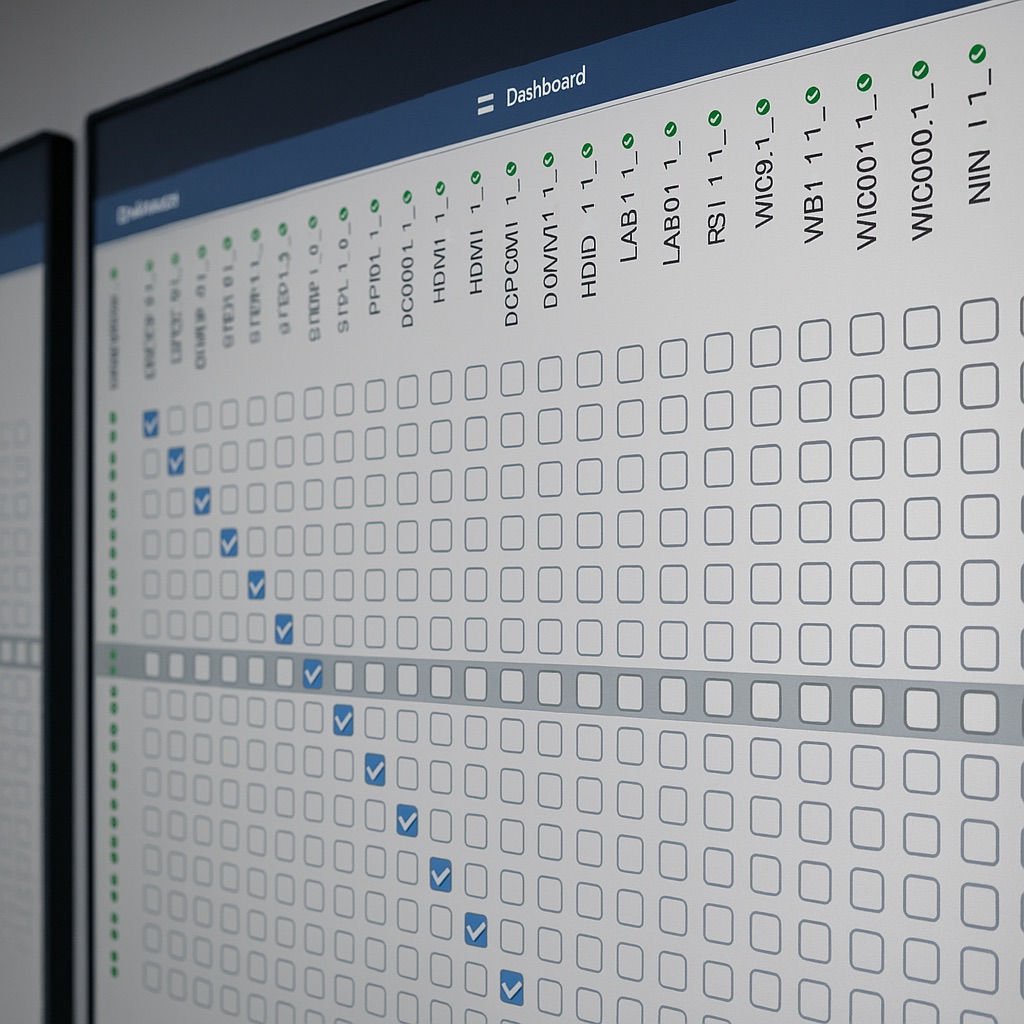SDVoE
April 14, 2025
•Read time: 5 min
Unlocking the Power of SDVoE: Opportunities, Challenges, and Smarter Control
SDVoE is redefining professional AV by delivering low-latency, high-quality signal distribution over Ethernet. But with its potential comes complexity. In this post, we explore the benefits, challenges, and how control software can bridge the usability gap.

SDVoE: The Next Evolution in Pro AV
The Software Defined Video over Ethernet (SDVoE) standard has emerged as a game-changer in the AV-over-IP world. Built for speed, flexibility, and scalability, SDVoE allows uncompressed, low-latency AV signals to travel over standard Ethernet infrastructure — eliminating the need for traditional matrix switchers.
Organizations and integrators turn to SDVoE for its 10GbE backbone, which enables a unified platform for video, audio, control, and even USB/KVM transport. As display systems grow more complex — think control rooms, medical imaging, or e-sports arenas — SDVoE offers the performance and adaptability these environments demand.
Why SDVoE? A Few Key Benefits
- Zero Latency - SDVoE transmits uncompressed video at sub-millisecond latency — ideal for real-time applications.
- Scalability - The ability to scale systems with off-the-shelf switches makes SDVoE infrastructure-friendly.
- Versatility - Beyond video, SDVoE transports audio, control, USB, and KVM, all in one network.
- Centralized Control - With proper software, SDVoE systems can be managed from a single interface, simplifying operations.
The Hidden Complexity: Usability Challenges
Despite its technical advantages, SDVoE systems can be daunting to manage. Users often face challenges such as:
- Non-Intuitive Interfaces - Many SDVoE hardware tools offer basic, rigid UIs that lack the flexibility needed for dynamic AV environments.
- Mode Switching Confusion - Switching between video-only, audio-only, video & audio, or KVM modes is often clunky and non-transparent to the user — leading to misconfigurations.
- Device Management Overhead - With dozens or even hundreds of devices in large-scale installations, identifying, filtering, and managing endpoints can become a logistical headache.
Overcoming These Challenges with Smarter Management Tools
This is where specialized management tools come into play, transforming the user experience. A solution designed specifically for SDVoE — optimized for platforms like Ninjar (IDK) — can abstract protocol complexity and offer a simple, responsive interface.
We offer such a solution — Virtual Matrix, our SDVoE Control Interface for Ninjar CTB — a purpose-built platform that brings intuitive control to SDVoE environments. It supports reliable TCP communication, persistent device state, powerful filtering, and streamlined management, helping integrators gain full control without the usual operational burden.
Final Thoughts: Control Matters as Much as Capability
SDVoE is undeniably powerful — but like any professional tool, it needs the right interface to be fully effective. As the AV industry continues to converge with IT, intuitive control software becomes not just a convenience, but a necessity.
If you're deploying SDVoE in mission-critical environments, consider not just the hardware — but how you'll manage it. A robust, responsive control layer may be the missing link between potential and performance.
